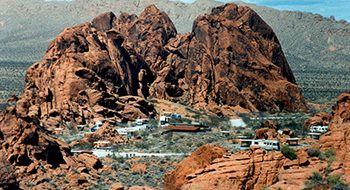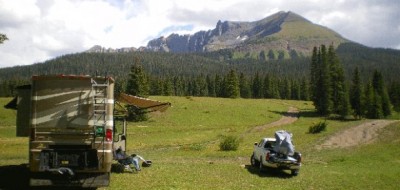By Bob Difley
 Inventors and inventions are a dime a dozen, as the saying goes. Proof is the number of patents filed in the US Patent Office every year (over 500,000 in 2010). Few ever make it to the marketplace, and even fewer become profitable. But that is where creativity takes root, and if the venture capital flows and the public accepts the product–take the iPhone or iPad for example–sales can go viral.
Inventors and inventions are a dime a dozen, as the saying goes. Proof is the number of patents filed in the US Patent Office every year (over 500,000 in 2010). Few ever make it to the marketplace, and even fewer become profitable. But that is where creativity takes root, and if the venture capital flows and the public accepts the product–take the iPhone or iPad for example–sales can go viral.
What does that have to do with RVing. I’m sure the inventor of the first commercially viable cell phone was not thinking of how useful a mobile, untethered, phone could be to the RV traveler making his nightly campground reservation on the fly, checking ahead to restaurant seating availability, taking calls from excited grandchildren while cruising down the highway, or calling in emergency services when away from nearby help. It took some RVers to actually look at the new invention and ask, “How can I use this to make my life better?”
The same holds true with inventions and progressive ideas today. The shortsighted seldom see the long term benefits, only the short term shortcomings of new ideas that need help along their path to usefulness. And that’s where the electric vehicle industry is today. Many people see the shortcomings–heavy expensive batteries, short periods of use before requiring recharging, long recharge periods, not enough charging stations, etc.–without seeing that with increasing acceptance comes increasing innovation and improvement, and eventually–if the early adopters inspire the general public to get behind the concept bringing it mainstream.
 One such innovation that could be a game changer on the electric vehicle scene is the wind lens by Japan’s Kyushu University, which they have demonstrated can produce three times the power of today’s wind turbines to supply electricity to the power grid. But that alone is not enough to get excited about.
One such innovation that could be a game changer on the electric vehicle scene is the wind lens by Japan’s Kyushu University, which they have demonstrated can produce three times the power of today’s wind turbines to supply electricity to the power grid. But that alone is not enough to get excited about.
What is exciting is looking at some other statistics, such as “The International Clean Energy Analysis (ICEA) gateway estimates, as noted by Karl Burkhart writing on the Mother Nature Network, “that the U.S. possesses 2.2 million km2 of high wind potential (Class 3-7 winds) — about 850,000 square miles of land that could yield high levels of wind energy. This makes the U.S. something of a Saudi Arabia for wind energy, ranked third in the world for total wind energy potential.”
For RVers, the first step toward moving away from fossil fuels and into electrical power, might be an electric vehicle (EV) tow car that could be recharged while driving down the road or overnight (from the grid which is supplied by cheaper, non-fossil-fueled or coal powered energy) at the campground. With the sale of more EVs comes more charging stations where you could stop for a bathroom break and lunch and plug in to a charger and pump up your battery for an additional 25 to 50 or more miles of range.
With experimentation by UPS, municipal bus fleets, and urban truck fleets in electric trucks, the increase in size from cars to trucks indicates that smaller RVs could soon become electrified–or hybridized, using both an electric motor and a supplemental gas engine for extended range–bringing great increases in mileage for RVs.
What happens in the future ultimately ends up with consumers. If they can step out of their comfort zone and start embracing EV technology, the chances of switching to electrical power will happen sooner, rather than later. But it is coming. An electric powered vehicle was named Car of the Year by Motor Trend Magazine in 2011 (Chevy Volt) and 2012 (Tesla Model S), both highly acclaimed and fanatically praised by their owners.
If you haven’t yet, take a look at what is happening in the EV field here, here, and here. You might be surprised.
For more RVing articles and tips take a look at my Healthy RV Lifestyle website, where you will also find my ebooks: BOONDOCKING: Finding the Perfect Campsite on America’s Public Lands (PDF or Kindle), 111 Ways to Get the Biggest Bang for your RV Lifestyle Buck (PDF or Kindle), and Snowbird Guide to Boondocking in the Southwestern Deserts (PDF or Kindle), and my newest, The RV Lifestyle: Reflections of Life on the Road (PDF or Kindle reader version). NOTE: Use the Kindle version to read on iPad and iPhone or any device that has the free Kindle reader app.

